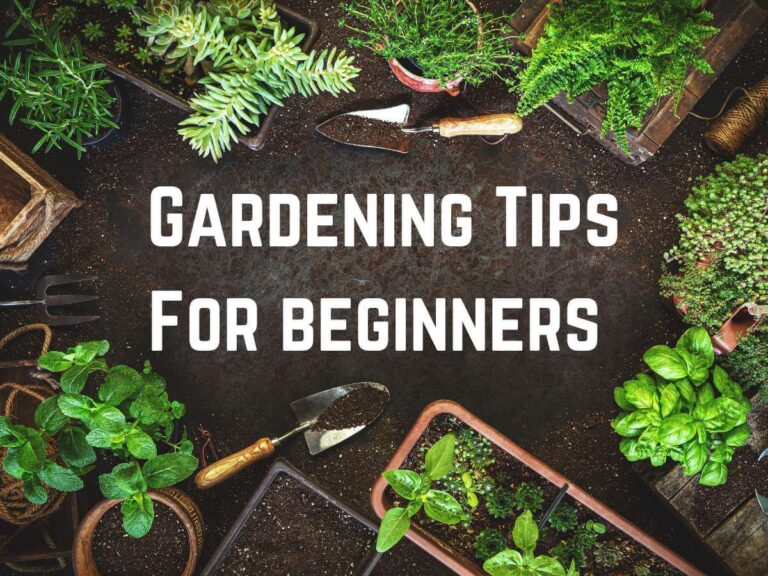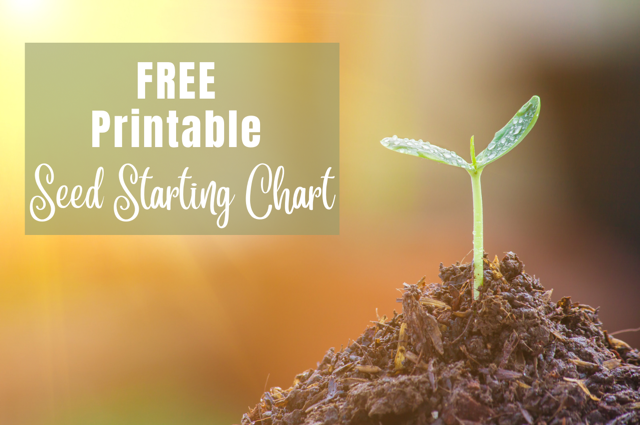
How To Grow Spinach Indoors
Growing spinach indoors is a great way to enjoy spinach and all its nutritional benefits without having to battle the cold weather for harvesting. Spinach can easily be grown indoors, ensuring a fresh supply of spinach all year long.
One of my favorite garden fresh vegetables is fresh, leafy greens for a salad. I spent years buying salad blends from the grocery store, having no idea what I was missing out on by growing it myself. That first bowl full of a freshly picked salad from my own garden blew me away!
I love adding baby spinach to my salads, and my middle daughter loves sautéing it in her scrambled eggs. We like a fresh supply of spinach year round.
I garden in Michigan, though, which means that much of the year it’s too cold to grow much. Although spinach is a cool weather crop that tolerates light frosts, and can be grown in some pretty cold temps (especially in a cold frame) it’s far easier to grow it indoors in the winter months.
Spinach prefers cool temperatures and will bolt (go to seed) when temperatures get too hot. The average indoor temperature of around 68° is perfect for growing spinach. It will happily grow indoors all year long.
This post may contain affiliate links. You can read my full policy here.
Benefits of growing spinach indoors
Growing spinach indoors has several benefits, including:
- Year-round availability. Growing spinach indoors means a constant, steady supply of fresh spinach, regardless of the season.
- Control over the growing conditions. Growing spinach indoors allows you to control the light, soil temperature, humidity, water, and nutrients your plants are receiving. This ensures the best success for your efforts.
- Better pest and disease control. By growing spinach indoors, you can avoid a lot of pests and fungal diseases that may harm your plants outdoors.
- Space-saving. Spinach plants are relatively small, even fully grown, making them a great choice to grow indoors or in areas with limited space.
- Nutrition value. Spinach is full of vitamins and minerals, including vitamins A and C, and calcium and iron. Growing spinach indoors ensures a steady supply of this nutritious vegetable.
What is the best type of spinach to grow indoors?
There are 3 main varieties of spinach for growing at home: savoy, smooth-leaf, and semi-savoy.
Savoy spinach has crinkly leaves and can be difficult to clean, but looks and tastes better. It will also store for longer. Savoy spinach is also more tolerant of cold temperatures than other types. Bloomsdale is a popular variety of savoy spinach.
Smooth-leaf spinach, or flat-leaf spinach, has a much smoother leaf than savoy, making it easier to clean. It is typically the type used in canning and freezing, because it grows quickly and is easier to clean and process. Smooth-leaf spinach is sweeter and often harvested young for baby greens. Space is a variety of smooth-leaf spinach that can be grown in all seasons.
Semi-savoy spinach is somewhere in the middle between savoy and smooth-leaf spinach. It’s leaves are easier to clean than savoy, and it tends to be more bolt and disease resistant. Semi-savoy spinach is a great spinach for all seasons, tolerating the cold and resisting bolting when the temperatures rise. Matador is a popular variety of semi-savoy and can be grown year-round in mild climates.
When choosing a variety for growing indoors, consider your local climate.
If you live in an area with warm weather, especially if it is hot and humid, a slow-bolting variety is best, such as Bloomsdale or Malabar spinach.
If you live in an area that is much cooler, and your indoor temperatures are cooler, go with a variety that is suited to a colder climate. Tyee and Matador are great choices.
What supplies are needed to grow spinach indoors?
Spinach is an easy to grow vegetable that doesn’t require much equipment to be grown indoors. A few basic supplies are all you need to get started.
Supplies needed:
- Small pot or planter (the ones i have are sold out, but are similar to these. They’re perfect for setting on a windowsill)
- Good quality potting mix (this is a great one)
- Compost
- Spinach seeds (Bloomsdale is my favorite for summer spinach, and Matador is a great option for cool weather or indoor spinach, if you live in the north)
- A sunny window or grow lights (I use these grow LED grow lights)
- Fertilizer (optional, but I love this one when the plants are a few inches high and then this one for every feeding after, as it helps encourage leaf growth)
How to grow spinach indoors
To grow spinach indoors, start with a container that is at least 6 inches wide and 8 inches deep, with drainage holes in the bottom.
Fill the container with a high quality, well-draining potting mix. You can purchase one or make your own.
Before planting your seeds, soak them in a small amount of warm water in a dish for 24 hours. This helps spinach seeds germinate quicker and more evenly.
After soaking, dry your seeds off with a paper towel and and place them in an air-tight container. Keep them in a cool place, such as your refrigerator, for a week. This helps increase your germination rate, and helps the seeds germination evenly.
When you’re ready to plant, place your spinach seeds on the surface of the potting mix every 3-6 inches, depending on the width of your container. If you plan on harvesting leaves while the plant is young, your seeds can be spaced closer. If you want your spinach to grow to full maturity, 6+ inches is ideal.
Add more potting soil on top so your seeds are buried ½ inch deep. Generously spray the surface of the soil with water until it’s wet, but not water-logged. Keep the water bottle handy to water your seedlings with until the have germinated.
After watering, place your spinach seeds in a sunny window or under grow lights. Spinach requires at least 8-10 hours of sun per day, but 14-15 is ideal for seedlings and young spinach plants.
Spritz your seeds with water or water from the bottom up until they have germinated. Spinach can take up to two weeks to germinate.
As your spinach grows, be sure to keep the soil evenly moist, but not wet. Spinach likes plenty of water. When the top inch of soil feels dry, it’s time to water again.
Spinach is what’s referred to as a “heavy feeder.” This means that spinach takes up a lot of nutrients from the soil, and can benefit from a regular application of fertilizer every 2 weeks. Seaweed fertilizer is a great choice for spinach seedlings. Young plants benefit from nitrogen-based fertilizers, which help with leaf growth. Look for an organic fertilizer with a 15-10-10 ratio, such as this one. Spinach also benefits from an addition of organic matter to the soil surface, such as worm castings.
How to harvest spinach indoors
Spinach can be harvested any time after the leaves are 2-4 inches long. Harvest the tender outer leaves first, and leave the inner leaves to continue growing. New leaves will continue to grow, giving you a continuous harvest. Spinach can be harvested several times as baby, or immature greens, or the entire plant can be harvested when fully mature.
To harvest, trim the leaves with a sharp, clean knife or kitchen shears.
To prolong your spinach harvest, plant more spinach seeds every 2-3 weeks. This will give you a continuous supply of spinach, with new plants coming to maturity as older plants are used up.
You may also like:
- How Long Does it Take For Vegetable Seeds To Sprout?
- How To Easily Grow Microgreens At Home
- Pros and Cons of Organic Fertilizer and How To Use Them

FAQ
Can I grow spinach indoors during winter?
Spinach is a compact vegetable that prefers cooler temperatures, such as those found indoors. It’s also great for growing in containers. This makes it an excellent choice for indoor gardening.
How much light does spinach need indoors?
If growing under grow lights indoors, give your indoor spinach plants at least 8-10 hours of light each day.
Can you grow spinach under LED lights?
Since spinach is tolerant of medium light conditions, it can receive all the light it needs under LED lights. If growing spinach indoors under LED lighting, give spinach at least 8-10 hours of light per day.
Will spinach regrow after cutting?
Spinach, like many loose-leaf greens, will regrow after cutting. To harvest, remove leaves from the outer ring and leave the inner portion of leaves to continue growing. Spinach leaves will regrow in just a few days.
What is the best container for growing spinach indoors?
Spinach needs a container that is at least 6 inches wide by 8 inches deep, with plenty of drainage holes.
How often do you water indoor spinach?
Spinach prefers moist, well-drained soil. Water once the top inch of soil feels dry, and choose a container with drainage holes.
Does spinach grow well in pots?
Due to its compact size and fairly shallow root system, spinach is an excellent choice for growing in containers. Choose a container that is at least 6 inches wide by 8 inches deep, with drainage holes in the bottom.
What kind of fertilizer do you use for indoor spinach?
Spinach does well with a fertilizer that’s high in nitrogen, such as a 15-10-10. Use an all-purpose, liquid fertilizer such as fish emulsion or a seaweed fertilizer.

As an Amazon Associate, I earn from qualifying purchases.








